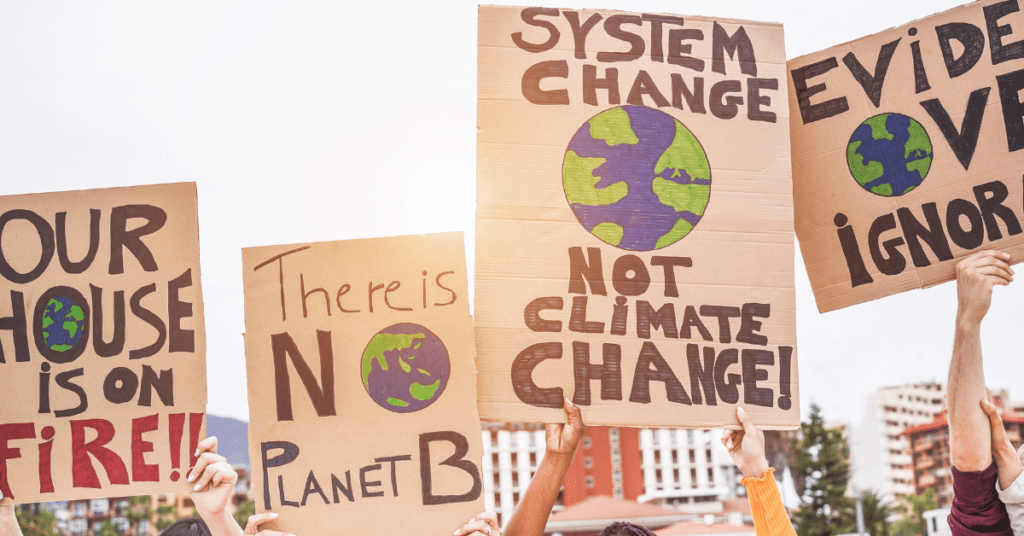In today’s rapidly evolving digital landscape, Information Technology (IT) stands as a cornerstone of modern society, influencing various aspects of our lives. Its impact spans from driving business innovation to transforming healthcare and education, showcasing its ubiquitous presence. However, amidst these advancements, a critical challenge looms large – climate change. The intersection of IT and environmental sustainability is becoming increasingly apparent, highlighting both opportunities and challenges.
IT holds immense potential in aiding the fight against climate change. Technologies like data analytics and artificial intelligence can optimize energy consumption, enhance resource efficiency, and facilitate the transition to renewable energy sources. Smart grids, IoT devices, and predictive modeling can revolutionize how we manage and monitor energy usage, thereby reducing carbon footprints and promoting sustainability.
On the flip side, the rapid proliferation of IT infrastructure contributes to a surge in energy consumption and electronic waste generation. Data centers, in particular, are notorious for their high energy demands and environmental impact. The manufacturing and disposal of electronic devices also pose significant challenges in terms of e-waste management and resource depletion.
To address these complexities, a holistic approach is necessary. IT companies must prioritize eco-friendly practices, such as using renewable energy sources and implementing efficient cooling systems in data centers. Additionally, policymakers can incentivize green IT initiatives through regulations and incentives, fostering a more sustainable IT ecosystem.
In conclusion, the dual role of IT in combating climate change is multifaceted. By leveraging its capabilities responsibly and innovatively, IT can be a powerful ally in the fight against climate change while mitigating its own environmental footprint. It’s imperative for stakeholders across industries to collaborate and drive towards a greener, more sustainable future.
Pros of IT in Climate Change Mitigation
- Data Analytics and Monitoring: Advanced data analytics and monitoring tools have revolutionized the way we interact with environmental data by facilitating the collection, analysis, and interpretation of vast amounts of information in real-time. This data-driven approach plays a crucial role in empowering scientists and policymakers to make informed decisions and develop effective strategies to combat the adverse effects of climate change. By harnessing the power of these tools, we can gain deeper insights into complex environmental systems, identify trends, and predict future scenarios with greater accuracy. Through the utilization of sophisticated algorithms and modeling techniques, we can extract valuable insights from diverse datasets, ranging from temperature records and air quality measurements to satellite imagery and oceanic data. This wealth of information enables us to monitor changes in ecosystems, track the progression of environmental phenomena, and evaluate the effectiveness of various interventions aimed at reducing carbon emissions and preserving biodiversity. Ultimately, the integration of advanced data analytics and monitoring tools into environmental research and policy-making processes is instrumental in fostering sustainable practices, enhancing resilience to climate change, and safeguarding the health of our planet for future generations.
- Renewable Energy Management: IT solutions play a crucial role in the integration and management of renewable energy sources such as solar and wind power into existing energy grids. By leveraging advanced technologies like smart grids, IoT devices, and AI algorithms, energy companies can optimize energy distribution, reduce wastage, and increase overall efficiency. Smart grids equipped with IoT devices enable real-time monitoring of energy consumption and production, allowing for better coordination and balancing of supply and demand. AI algorithms can analyze vast amounts of data to predict energy usage patterns and optimize the performance of renewable energy sources. Furthermore, IT solutions enable the seamless integration of renewable energy sources into existing energy grids, ensuring a smooth transition towards a more sustainable and environmentally friendly energy system. By harnessing the power of technology, energy companies can not only reduce their carbon footprint but also improve the reliability and resilience of the energy grid. Overall, IT solutions play a crucial role in driving the adoption of renewable energy sources and advancing the transition towards a cleaner and more efficient energy future.
- Remote Sensing and Geospatial Analysis: Satellite imagery and geospatial analysis tools have transformed our ability to monitor and comprehend environmental changes. These technologies capture detailed images from space, enabling us to gain crucial insights into deforestation, land use alterations, and carbon storage. By utilizing these tools, we can track the scope and speed of deforestation, pinpoint areas that are vulnerable to further degradation, and assess the impact of conservation initiatives. Moreover, satellite imagery and geospatial analysis provide a comprehensive view of our planet’s ecosystems, allowing us to better understand the interconnectedness of various environmental factors. This data is instrumental in informing decision-making processes related to land management, resource allocation, and policy development. Additionally, these technologies play a vital role in enhancing our ability to respond to natural disasters, monitor climate change impacts, and support sustainable development efforts. In essence, satellite imagery and geospatial analysis have revolutionized the way we approach environmental monitoring and management, offering a powerful tool for safeguarding our planet’s natural resources and promoting a more sustainable future. Moreover, satellite imagery and geospatial analysis tools play a crucial role in monitoring ecosystems and tracking environmental degradation. They help us identify areas of habitat loss, monitor changes in vegetation cover, and assess the impact of human activities on biodiversity. This information is essential for making informed decisions about land management, resource allocation, and conservation planning. In addition, these technologies are instrumental in planning conservation efforts and sustainable land use practices. By analyzing satellite data, researchers and policymakers can identify priority areas for conservation, evaluate the effectiveness of protected areas, and develop strategies to mitigate environmental impacts. Overall, satellite imagery and geospatial analysis tools are powerful tools for monitoring and protecting our planet’s precious natural resources.
- Virtual Collaboration and Telecommuting: The rise of remote work technologies and virtual collaboration platforms has revolutionized the way we work, offering a more flexible and efficient alternative to traditional office settings. One of the key benefits of this shift is the significant reduction in the need for physical commuting, leading to a decrease in greenhouse gas emissions associated with transportation. By allowing employees to work from home or other remote locations, companies are helping to mitigate their environmental impact and contribute to a more sustainable future.In addition to the environmental benefits, remote work also offers advantages in terms of work-life balance, productivity, and cost savings. Employees have the flexibility to create their own schedules and work from the comfort of their own homes, reducing stress and improving overall well-being. Virtual collaboration tools enable seamless communication and collaboration among team members, regardless of their physical location, leading to increased efficiency and productivity. Overall, the shift towards remote work represents a positive step towards a more sustainable and inclusive work culture, benefiting both employees and the environment. As technology continues to advance, remote work is likely to become even more prevalent, shaping the future of work in a more eco-friendly and efficient manner. In addition to the environmental benefits, remote work also has a positive impact on productivity and work-life balance. Without the daily commute, employees can save time and energy, allowing them to focus more on their tasks and achieve better results. Furthermore, the flexibility of remote work enables individuals to better manage their personal and professional responsibilities, leading to improved overall well-being. Overall, the proliferation of remote work technologies is not only environmentally friendly but also enhances productivity and work-life balance, making it a win-win solution for both companies and employees.
- Eco-friendly Innovations: IT-driven innovations have revolutionized various industries by leveraging cutting-edge technologies to minimize resource consumption, optimize performance, and reduce carbon footprint. Smart buildings, for example, utilize sensors and automation systems to efficiently control lighting, heating, and cooling, resulting in significant energy savings. Automated transportation systems, such as autonomous vehicles and traffic management systems, not only improve traffic flow and safety but also reduce fuel consumption and emissions. Precision agriculture employs drones, sensors, and data analytics to monitor crops and livestock, enabling farmers to make informed decisions that enhance productivity while minimizing water usage and chemical inputs. These innovative solutions are reshaping the way we interact with our environment and are crucial in the fight against climate change. By integrating IT technologies into various sectors, we can create more sustainable and efficient systems that not only benefit businesses and consumers but also contribute to a healthier planet. As we continue to embrace these advancements, it is essential to prioritize sustainability and responsible resource management to ensure a greener future for generations to come.

Cons of IT in Climate Change Mitigation
- E-waste and Resource Depletion: The rapid advancement of IT hardware and devices leads to the generation of electronic waste (e-waste) and contributes to resource depletion. Improper disposal and recycling of electronic products pose environmental hazards and exacerbate pollution levels.
- Energy Consumption: Data centers and IT infrastructures consume vast amounts of energy, primarily derived from fossil fuels. The energy-intensive nature of IT operations, if not managed efficiently, can offset the environmental benefits achieved through other IT-enabled solutions.
- Digital Divide and Inequity: Access to technology and digital resources is not uniform across regions and populations, leading to a digital divide. Marginalized communities and developing countries often lack the necessary infrastructure and resources to leverage IT for climate change mitigation, widening the existing socio-economic disparities.
- Privacy and Security Concerns: The collection, storage, and analysis of sensitive environmental data raise significant privacy and security concerns. Unauthorized access, data breaches, and misuse of personal information can undermine public trust and hinder collaborative efforts to address climate change.
- Short-term Focus and Over-reliance on Technology: There is a tendency to prioritize short-term technological solutions over long-term sustainable practices. An over-reliance on IT-driven solutions may divert attention from holistic approaches that require societal and behavioral changes to achieve meaningful and lasting impact.
Conclusion
While Information Technology offers powerful tools and innovative solutions to address the complex challenges posed by climate change, it is essential to recognize and mitigate its inherent limitations and potential drawbacks. A balanced and integrated approach that combines technological advancements with sustainable practices, community engagement, and policy reforms is crucial to harnessing the full potential of IT in the fight against climate change. As we continue to navigate the intersection of technology and environmental sustainability, collaboration, awareness, and responsible innovation will be key to creating a greener, more resilient, and equitable future for all.
Related Content
- Big Tech Versus Climate Change
- The Science of Climate Change Explained: Facts, Evidence and Proof
- Climate change: How do we know it is happening and caused by hum
Explore Micro2media.com
- Revolutionizing Design: A Comprehensive Review of AI’s Impact on Engineering and Product Design
- AI-fueled Freelancing: Revolutionizing Work in the Gig Economy
- Unlocking Precision: The AI Revolution in Software Quality Assurance

